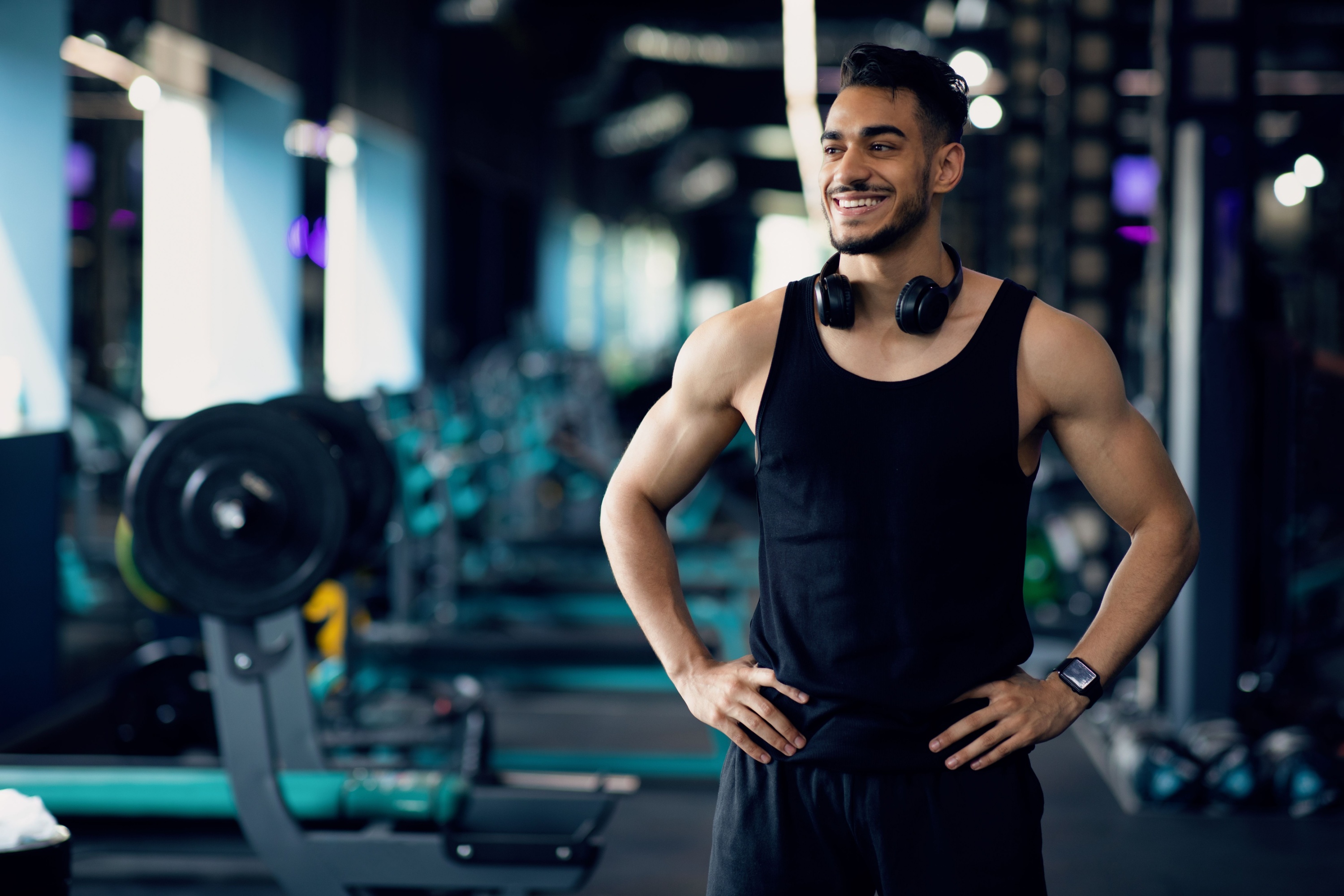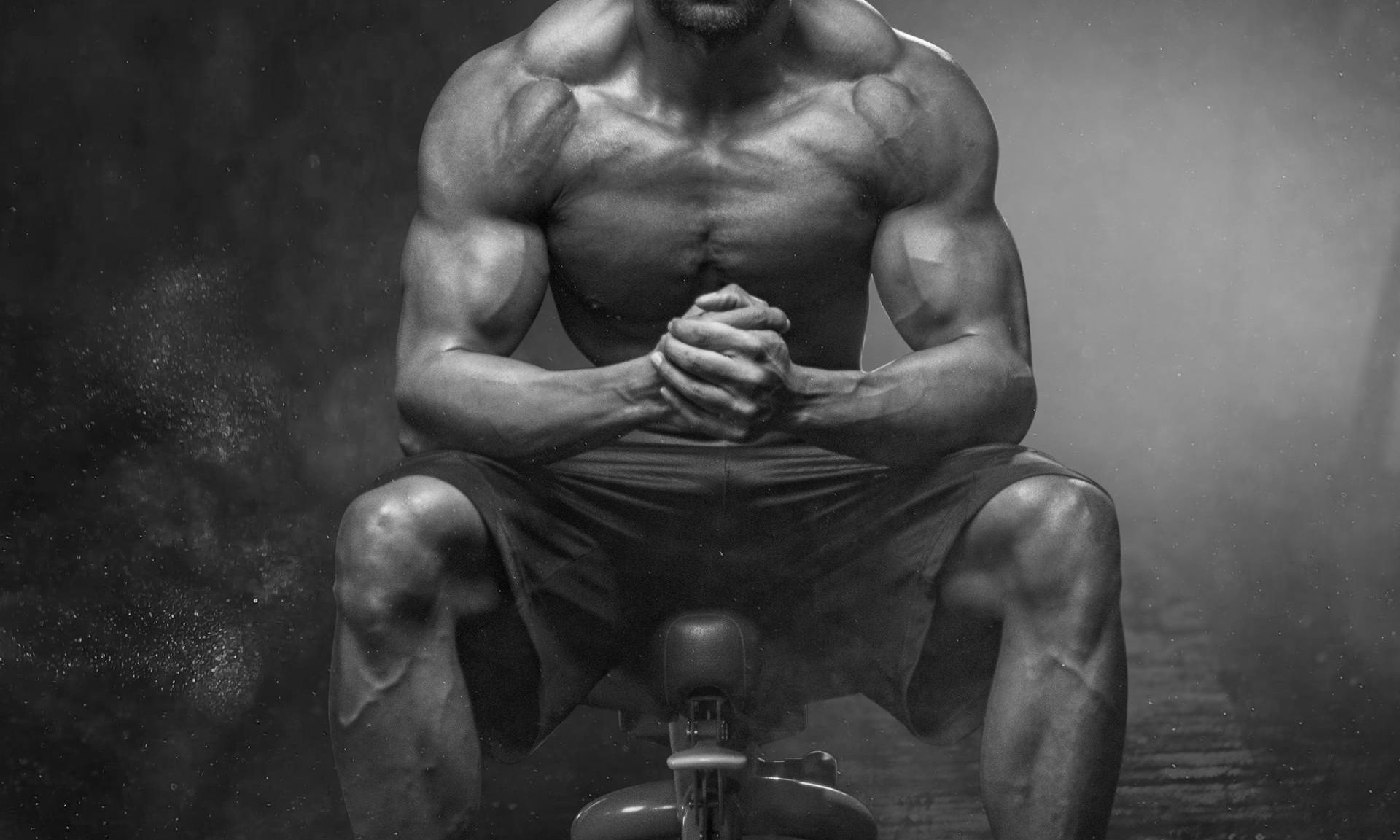Pistol squats have a cool-sounding name, and the exercise looks cool, too; somewhat like a ninja balancing your entire body weight on just one leg. Pistol squats require a certain fitness level to master, but it’s a highly rewarding exercise that’s worth including in your workout plan.
A pistol squat or single-leg squat is a variation of the traditional squat where you squat down, but you balance your entire body weight on one leg. A pistol squat is a type of single-leg squat. With the standard two-legged squat, you usually stop when your hips are about knee level. With a pistol squat, you’ll lower your hips right down to the floor as low as you can go before pressing back up to stand. You’ll reach a lower depth and keep your other leg extended straight out in front of you with your foot up off the floor throughout the movement. This requires a degree of strength, balance, and coordination.
You’ll build ankle strength and mobility, improve your balance and coordination, help correct muscular imbalances, and more. It’s time to up your squat game. Here’s everything you need to know about the pistol squat.
How to do a pistol squat

Here’s how to do a pistol squat:
- Start standing up with your arms straight out in front of you at shoulder height.
- Shift all of your weight onto your right leg.
- Engage your core and lift your left leg until it’s extended out in front of you at hip height.
- Bring your hips back and start to bend your right knee to lower your body into a squat as if you’re trying to sit down on an invisible chair.
- Try to keep your right knee centered over your right foot. Your torso can hinge forward slightly.
- Sink down as low as you can until your knee is fully bent and your thigh and calf are touching. Your left leg and hips should be hovering above the floor.
- Press down into your right foot to begin to straighten your right leg and return to the standing position. Your left leg should still be stable and extended out in front of you throughout the movement. Try to keep your left leg straight at hip height.
- Repeat until the set is complete.
- Switch to your other leg.
Why are pistol squats hard?

Pistol squats are harder than traditional squats because you’re balancing and supporting your entire body weight on just one leg. Pistol squats require a higher degree of strength, mobility, balance, and flexibility.
How to work your way up to performing a pistol squat

Building up your unilateral strength and balance to successfully perform a pistol squat takes time, and people accomplish this in different ways. Unless you’re highly advanced, it’s best to gradually progress over time and increase your knee, ankle, and hip mobility and your hip flexor and leg strength until you’re fully capable of performing a pistol squat. Start with a traditional squat and then move on to other variations, like the Bulgarian split squat. Level up your balance and flexibility with effective bodyweight exercises like box jumps and high knees first.
If you can master pistol squat modifications, you’re likely to master the pistol squat, too.
Assisted pistol squats: You can perform this modification by holding on to a support like gymnastic rings. You can also try pressing your back into a stability ball that’s against a wall.
Box pistols: Try sitting on a box or a bench, extending one leg out in front of you, then standing up on the floor using your other leg. Try to use a lower box and work on improving your balance.
Top tips for perfect form

Here are some top tips for perfect pistol squat form:
- Ease into pistol squats and start out by squatting with a smaller range of motion. You can squat to a lower depth once you’ve perfected your technique.
- Hold on to a safety support while you’re developing sufficient strength and stability.
- Keep your arms straight out in front of you to help you balance.
- Hold the bottom of the movement for a few seconds to maximize endurance and muscle-building results.
- Keep your core engaged throughout.
- Always keep your standing heel planted flat on the ground.
Most common mistakes to avoid

Here are some of the most common mistakes to avoid when performing the pistol squat:
- Not engaging your core.
- Lifting your standing heel up off the ground.
- Looking around and losing balance and focus.
- Bending your arms.
- Dropping your extended leg down.
- Sitting too far back.
- Bouncing and using momentum rather than maintaining full-body tension.
- Putting too much weight on the front of your toes.
What muscles does the pistol squat work?

When performing pistol squats, you’ll supercharge your:
- Quads
- Glutes
- Calves
- Core
Most of the intense work with this exercise is done by your hip and thigh muscles. You’ll develop your balance with this unilateral movement because you’re shifting your weight on one side, which emphasizes your outside hip muscles.
What are the benefits of the pistol squat?

There are a multitude of reasons to try pistol squats, including:
- Building ankle strength and mobility.
- Improving balance and coordination, which reduces your risk of injury.
- Enhancing overall athletic performance.
- Enhancing your ability to perform your everyday functional activities.
- Building lower body strength and muscle mass.
- Correcting muscular imbalances.
How to include pistol squats in your workout routine

If you’re new to pistol squats and you aren’t ready to try them just yet, work on the modifications or alternatives two or three times a week until you’re comfortable trying a pistol squat. Bilateral strength moves like glute bridges and hip thrusts are also useful exercises to add to your routine to develop your squat power and set you on the path to pistol squats.
If you’re ready to conquer the pistol squat, throw it into your lower-body strength training so you can feel like a ninja, too.




